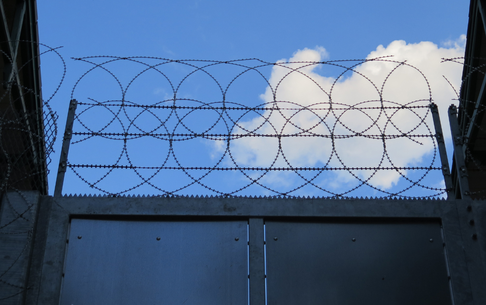Publicado em 5/09/2024 as 4:00pm
What is composite decking material?
When you are building a new deck or replacing an old one, there are many factors to consider....
When you are building a new deck or replacing an old one, there are many factors to consider. One of the most important factors is what material should be used for the deck. While most people will think of traditional wood, composite decking material is becoming a popular choice. This guide will cover what composite decking material is and the advantages and disadvantages of composite decking.

What is composite decking?
Composite decking material is made up of wood fibers and plastic, making it stronger and more durable than wood. As an environmentally friendly alternative to wood, it offers lower maintenance requirements, greater durability, and a longer lifespan. In addition, manufacturers can create composite wood decking that replicates the look of traditional wood.
Types of Composite Decking
There are three types of composite decking: solid, hollow and capped.
Solid
Solid composite decks are heavyweight and durable. They are closer to wood and are commonly used for pool decks, walkways to homes, and permanent decks for offices. However, solid composite decks can expand and contract in extreme weather conditions, which can lead to damage.
Hollow
Hollow composite decks are lighter in texture, less impact resistant, and require capping around the edges. They do not look as much like solid wood as solid composite decks, so they are generally used to install cables, siding and cladding.
Capped
Capped composite decking consists of a core board and a cap board. The core board is a mixture of wood by-products and recycled plastic, while the cap is a synthetic material. Capping the surface of the deck improves stain and scratch resistance and helps prevent discoloration. Capped composite decking is an excellent choice for decks, swimming pools, garden areas and more.
Benefits of composite decking
When exploring decking materials, consider the following benefits of composite decking.
1. Low maintenance costs
Wood decking is a common decking material choice, but you'll need tedious upkeep to maintain it. Otherwise, wooden decks can experience serious damage as they are used over time. However, you only need to clean composite decks regularly with soap and water to maintain their appearance. As a result, you will find that composite decks are a low-maintenance option for homeowners in different regions and climates.
2. Multiple Options
Composite decks are available in a variety of designs, finishes, and extra features, such as stain and UV protection. This makes it easier for you to customize your deck and find the right product for your location. The wide range of color options makes it easier to match your deck to the exterior of your home. While wood decks have a classic natural look, they don't have such a wide range of colors to choose from.
3. Environmentally Friendly
Because composite decks are made from recycled plastic and wood materials, they offer many environmental benefits, including:
Protecting trees: Recycling wood by-products increases the utilization of trees. By extending the use of trees, manufacturers can reduce the number of trees cut down.
Reducing plastic in the ocean: Recycling plastic prevents it from entering different ecosystems, including the ocean.
Preventing landfills: Recycled materials last longer, thus preventing them from ending up in landfills.
4. Abundant usability
Thanks to embossing and staining techniques, capped composite decking closely resembles natural wood. It is also fade, stain and scratch resistant.
Uncapped composite decking does not have a plastic cover to protect its core. Uncapped composite decking has fewer options, but tends to be more affordable than capped composite decking.
5. Hidden Fasteners
Traditionally, professionals use nails and screws when building decks. In addition to being conspicuous, they can lead to premature corrosion, cracking and rotting if not installed properly. Composite decking can be secured using hidden fasteners beneath the deck surface. This provides you with a smooth, clean look.
6. Waterproof
The manufacturing process makes composite decks waterproof. They are more resistant to wet weather, mold and mildew than wood, making them ideal for homeowners in areas with a lot of rain and snow.
7. Non-slip texture
This optional feature is useful for homeowners when it rains, water from the pool splashes onto the deck, or snow piles up in the winter. The boards still look like natural wood, but there is less risk of slips and falls.
Other Things to Consider About Composite Decking
Here are a few things to consider when looking further into composite decking:
1. Cost
The final cost of a composite deck depends on the options, styles, and features you choose, but most composite decks cost more than pressure-treated lumber. However, lower maintenance costs will offset the upfront cost over time.
2. Weight
Composite decks are heavier than natural wood and therefore require stronger framing. This means that structural supports must be wood, not composite decking.
3. Possible melting
Because composite decking is made from recycled plastic, it may melt in rare cases. For example, if you spill hot grease or coal on the surface. In addition to melting, the added heat will cause the deck to become softer and move out of its fasteners. On hot summer days, the deck can also be hot to the touch. Choosing a lighter color for your deck can help prevent this.
4. Hide fasteners
While their durability and neat appearance are advantages, hidden fasteners can also be a disadvantage. If you need to replace a board, you'll have to remove it from underneath, which may require you to remove multiple boards.




